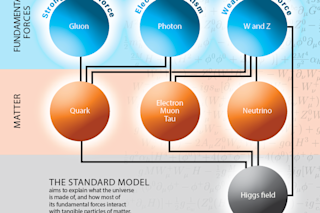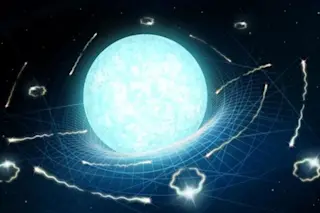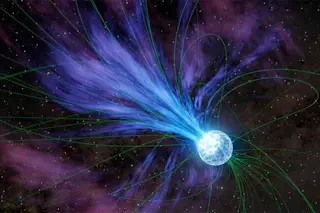The math that describes nature can be simple, even elegant. Consider Einstein’s beloved E = mc2. A mere three letters tell us that matter and energy are, essentially, the same. Heisenberg’s uncertainty principle, which sets limits on what we can know about reality at small scales, fits neatly on a coffee mug.
And then there’s the Standard Model. This sprawling equation fills half a page in 12-point type. It’s held together by “renormalization” — the mathematical equivalent of duct tape — and contains a bunch of arbitrary numbers with no pattern, filled in by hand to fit the results of experiments. It’s an awkward theory only a physicist could love.
But beauty isn’t everything. For all its ungainliness, the Standard Model just happens to be the best theory ever devised for answering a question humans have been asking for millennia: What is the universe made of?
“There’s a degree of ...















